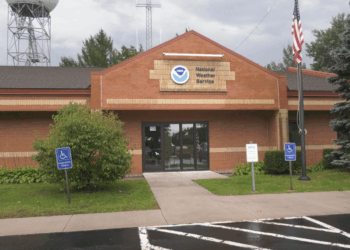An El Niño has developed in the equatorial Pacific. It has profound effects on the weather worldwide as well as here in Upper Michigan.
El Niño is the cyclical warming of the waters over the central and eastern equatorial Pacific off the coast of South America. The water temperature in this region oscillates between warm and cool over a roughly three- to seven-year cycle. This map (shown in video) shows the current sea surface anomalies over the equatorial Pacific. Note the red near South America, which indicates warmer-than-average water temperatures.
Spanish fishermen first observed this cycle of warm water off South America that peaks near Christmastime– hence, El Niño, or “little child.” Sir Gilbert Walker, an English physicist, noted the phenomenon just after the turn of the 20th century. He discovered an oscillation in pressure between Indonesia and the eastern Pacific, which he called the Southern Oscillation.
Meteorologists recognized the correlation between the Southern Oscillation and ocean temperatures decades ago. However, they did not realize the worldwide impact it caused on global weather until the great El Niño of 1982-83.
Now, its recognized that an El Niño, especially a strong one, correlates to wet, stormy winter weather in California and the southern U.S. In contrast, northern U.S. winters are usually warmer and drier than average because of the energetic but suppressed southern storm track.
Hence, the current NOAA outlook calls for above-average winter temperatures here in the U.P. and the rest of the northern U.S. As for precipitation, there will probably be less-than-average snowfall. That’s because less lake effect snow should fall due to fewer and milder cold air masses, as well as a tendency for storms to travel too far south of the Upper Peninsula to affect us.


















